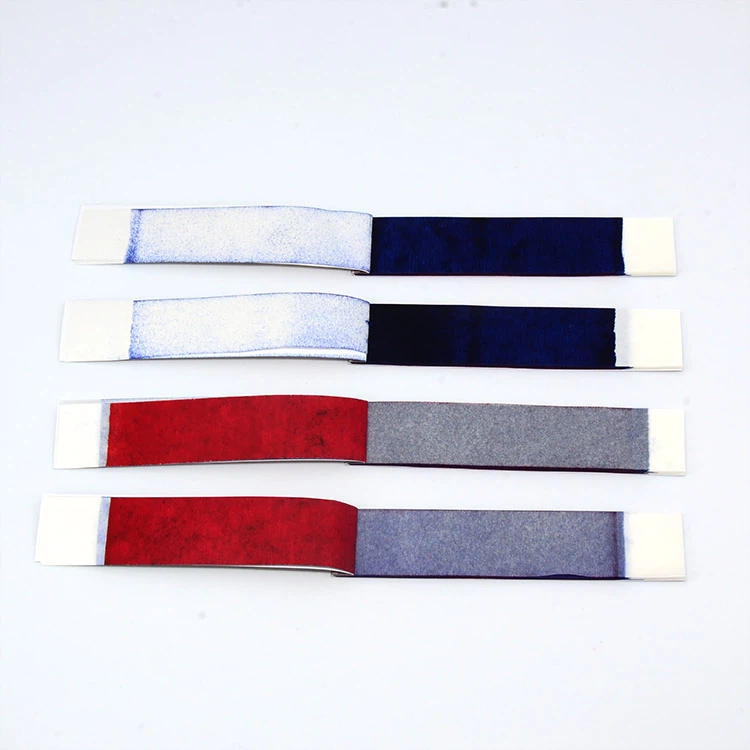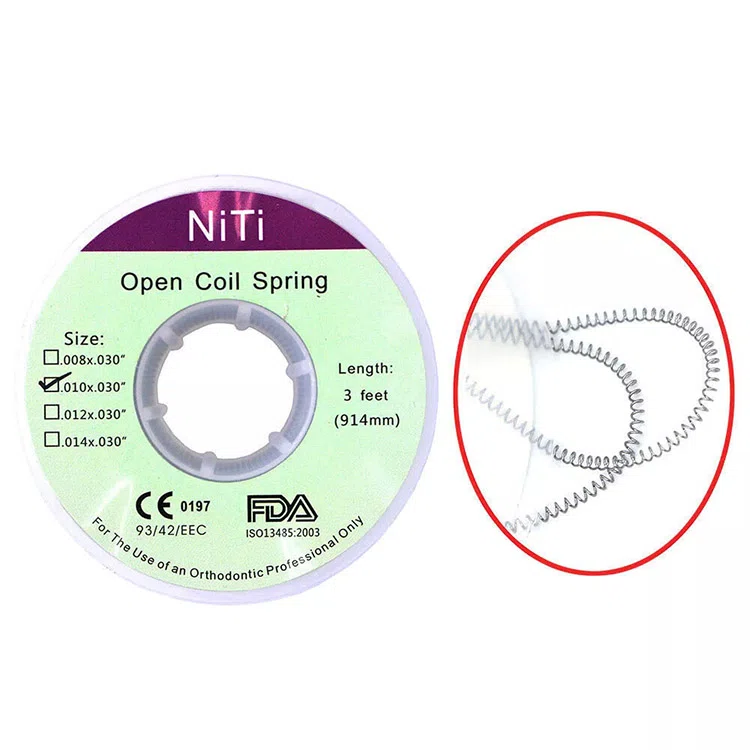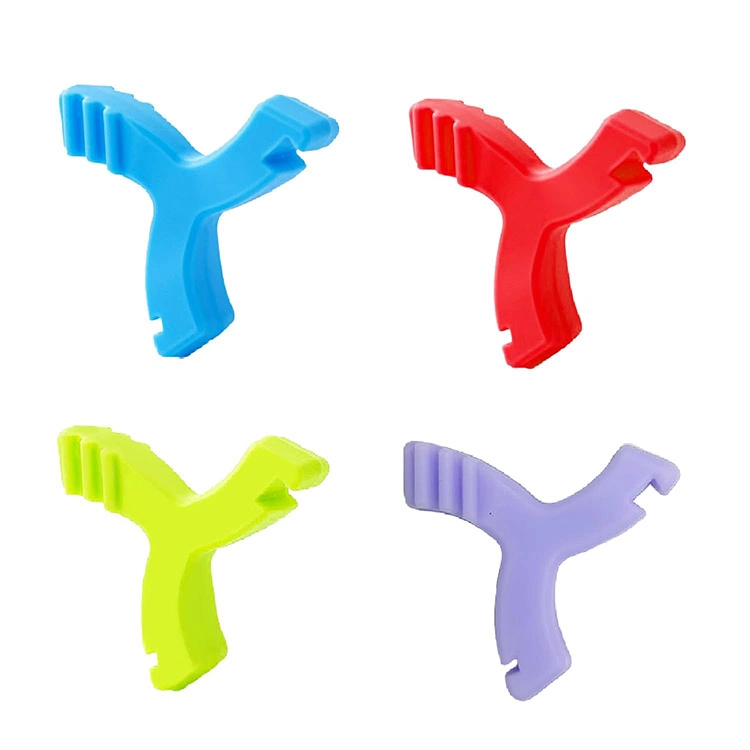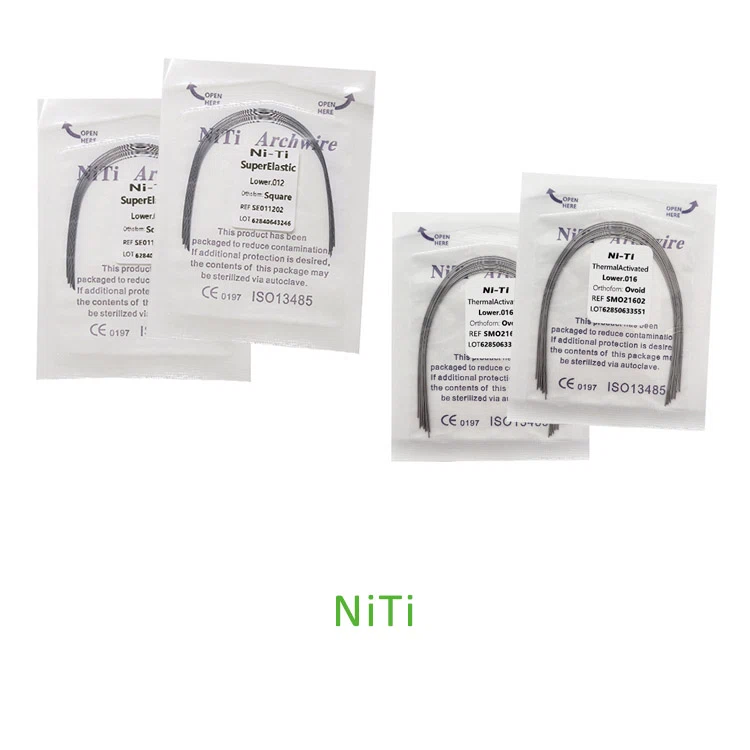
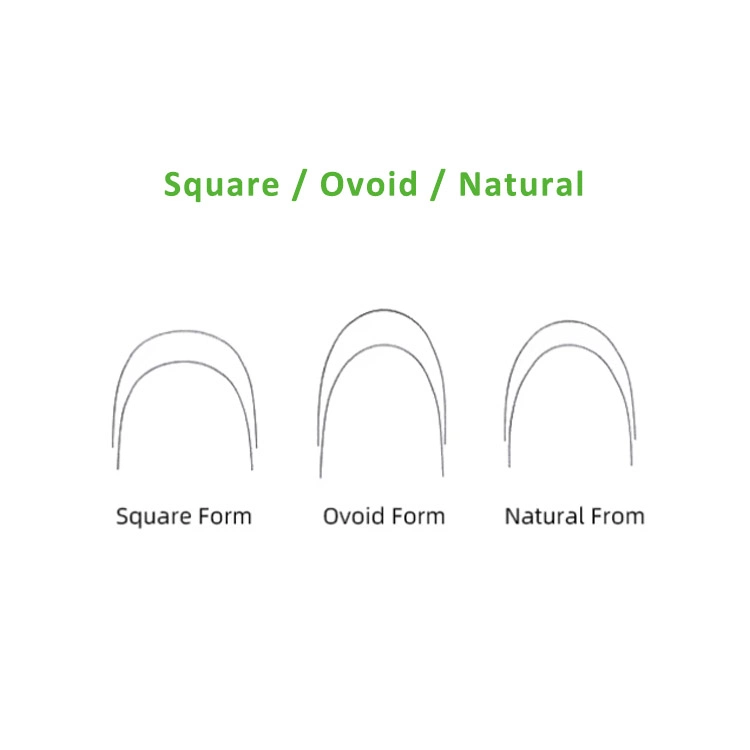
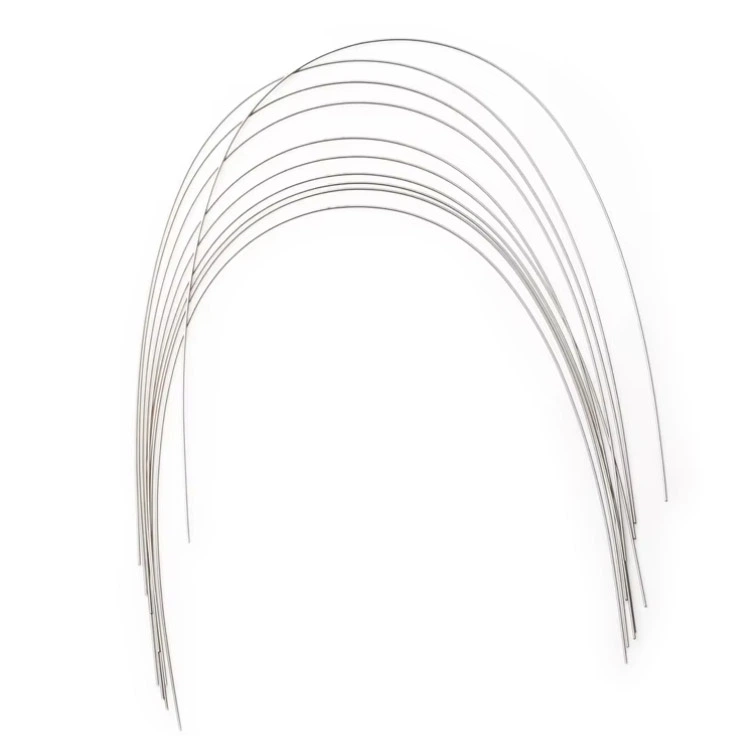
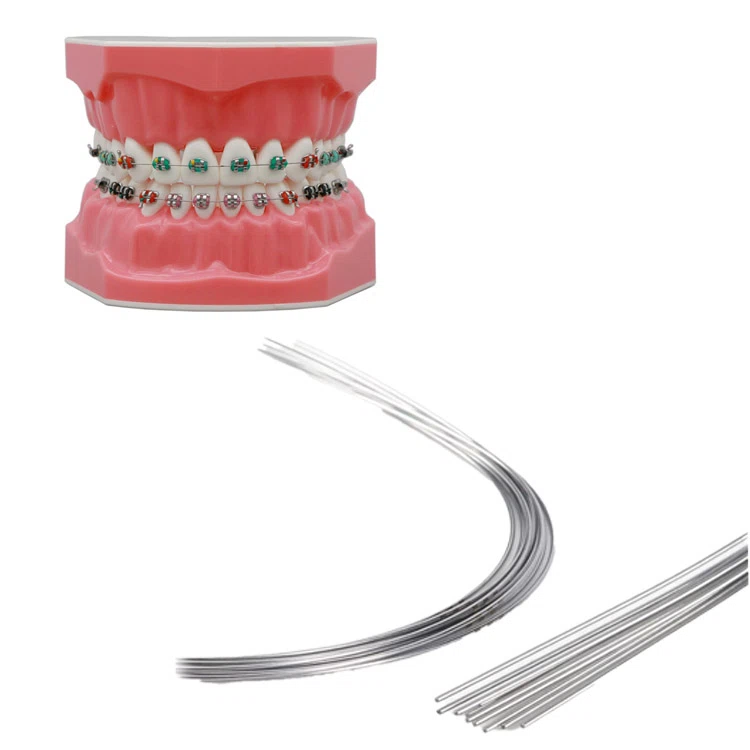
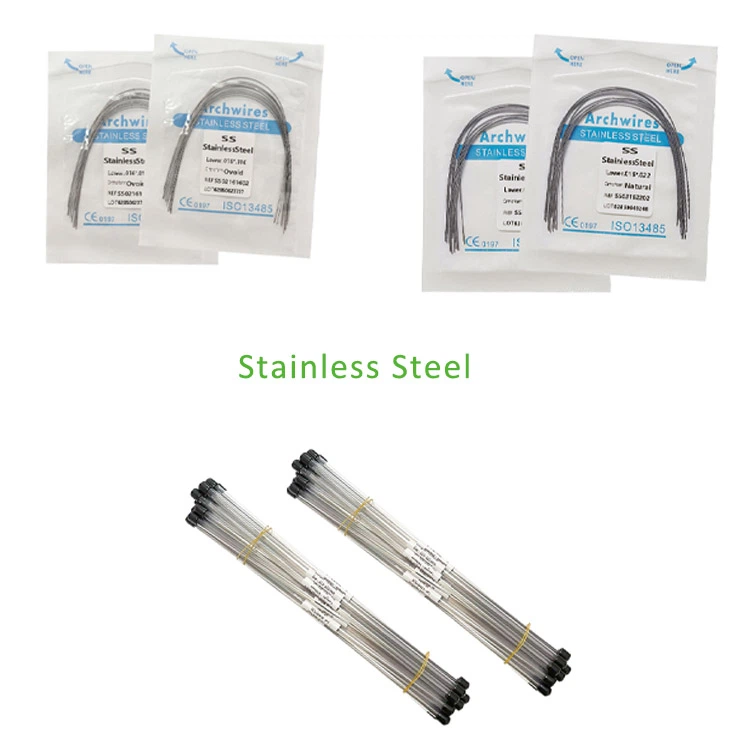
歯列矯正アーチワイヤ
- ニティ / ステンレス鋼アーチワイヤー
- パッケージ: 10PCS/パック
- 素晴らしいスプリングバックを展示します
- 一貫したパフォーマンス
- 摩擦の減少のために高洗浄
- 選択のためのフルシリーズサイズとフォームタイプ
歯列矯正アーチワイヤは、指定された位置に移動するように誘導するために歯に圧力をかけます. 通常、ブレースと組み合わせて使用されます, 矯正線の張力と方向を調整することによって, 歯のアライメントと咬傷の問題を効果的に改善できます.
歯列矯正アーチワイヤは、歯のサポートポイントとアンカーポイントに軽い連続張力をかけます. これらの歯は微妙に動きます, しかし、徐々に長期間にわたって, 目的の位置にシフトします. 矯正治療の結果は歯の整列です, 対称歯科アーチ, そして、歯間の薄さの減少, 顔の輪郭が変わります, それをより調和と審美的に心地よくします. 歯列矯正アーチワイヤは歯をまっすぐにし、より良い噛み合わせで噛む能力を向上させる.
歯列矯正アーチワイヤーカテゴリ
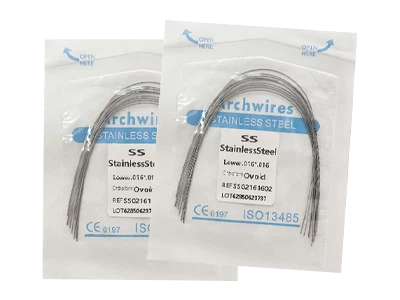
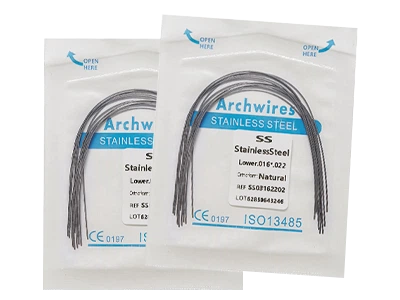
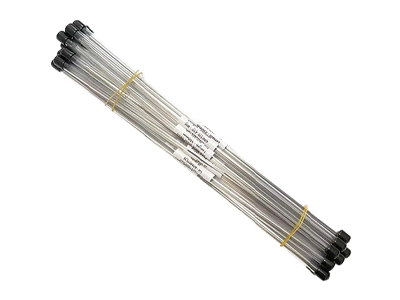
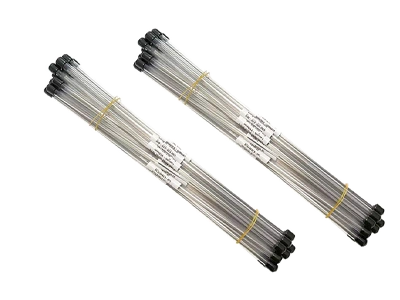
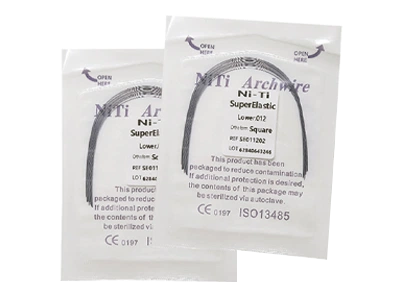
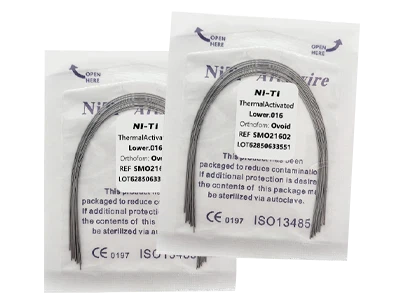
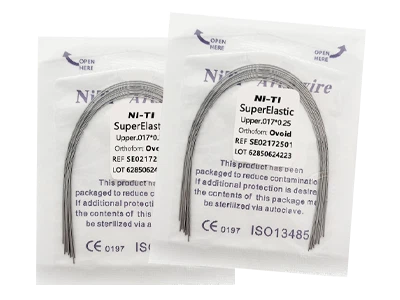
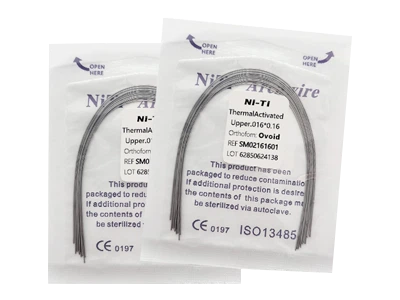
材料の構成に基づいています, 私たちの歯列矯正電線は、ステンレス鋼線とニティ線のいずれかに分類できます. ステンレス鋼のアーチワイヤーは安価で、耐摩耗性と耐食性が良好で、口腔内で長い間安定しています, 硬度が高い, NITIワイヤーほど快適ではありません, 弾力性が低い. NITIアーチワイヤーは非常に弾力性があり、形状メモリ機能があります. より柔軟です, 歯の表面によりよくフィットするようにします, したがって、それをより快適にしますが、より高い価格で.
関連製品
The Definition of Orthodontic Arch Wires
Orthodontic arch wire is a key component in oral orthodontic treatment. It is a fine wire material with specific mechanical properties, mainly transmitting orthodontic force through the archwire bracket system, promoting the slow movement of teeth and adjusting the occlusal relationship. Throughout the entire treatment process, orthodontic wires play a dual role as both a “force conductor” and a “tooth guide”, and their performance directly affects the orthodontic outcome, treatment duration, and patient comfort.
Orthodontic arch wires are typically made of metal alloys, such as stainless steel wires composed of iron, chromium, and nickel; nickel-titanium alloy wires made from nickel and titanium; and beta-titanium alloy wires featuring a titanium base alloyed with elements like molybdenum and niobium.
Principle of Orthodontic Arch Wires
The orthodontic arch wire precisely transmits the orthodontic force preset by the doctor to the target tooth through its connection with the brackets (metal or ceramic bases adhered to the surface of the tooth, which are accessories for orthodontic treatment), generating a compressive force and thereby promoting the slow movement of the tooth within the alveolar bone. The ultimate goal is to achieve the therapeutic objective of straightening teeth, coordinating occlusal relationships and improving facial morphology.
Material Classification and Features of Orthodontic Arch Wires
1. Stainless steel wire
- 構成: Mainly composed of metals such as iron, chromium, and nickel (chromium content: 17%-19%, nickel content: 8%-10%), some pro products also add elements such as molybdenum and titanium to optimize performance.
- 特徴: 高強度, great rigidity, strong corrosion resistance, and less prone to rust in a moist oral environment. It has a moderate elastic modulus, which can provide stable orthodontic force and has good processing performance. It can be bent into various shapes of archwire according to the treatment requirements.
- Applicable stage: It is often used in the middle and later stages of orthodontic treatment, such as fine adjustment after teeth alignment and correction of occlusal relationship, and is particularly suitable for cases with high requirements for orthodontic efficiency.
2. Nickel-titanium alloy wire
- 構成: A shape memory alloy composed of nickel (50%-55%) and titanium (45%-50%), it can be classified into austenitic nickel-titanium wire and martensitic nickel-titanium wire according to its crystal structure.
- 特徴: It has shape memory effect and super elasticity, can return to the preset shape at body temperature, and continuously provide gentle and stable corrective force. It has a low elastic modulus, causes less irritation to teeth, and improves patient comfort.
- Applicable stage: Mainly used in the early stage of treatment, such as aligned teeth and open occlusion, it is particularly suitable for cases with severe tooth crowding and torsion, effectively reducing the patient’s discomfort.
3. Titanium alloy wire (β -titanium alloy wire)
- 構成: Alloys formed by adding elements such as molybdenum, niobium, and zirconium to titanium as the base material (such as Ti-Mo-Nb-Zr alloy).
- 特徴: It combines the high strength of stainless steel wire with the good elasticity of nickel-titanium alloy wire, and its elastic modulus lies between the two. It has good biocompatibility and contains no nickel, making it suitable for patients allergic to nickel. It has strong corrosion resistance and good processing performance, and can be made into complex bow wire shapes.
- Applicable stage: It is suitable for the middle stage of orthodontic treatment, especially during the transition period from aligned teeth to fine adjustment. It can not only provide sufficient corrective force but also ensure the stability of tooth movement.
The Types of Orthodontic Arch Wires Corrective Forces
According to the nature of the force generated by orthodontic arch wires, they are mainly classified into the following types:
- Elastic force: When orthodontic arch wires undergo elastic deformation, elastic force is generated, which is the main source of power for tooth movement. Nickel-titanium alloy wire has the gentlest, most stable and longest-lasting elastic force, while stainless steel wire has stronger elastic force but a relatively shorter duration.
- Friction: The friction between orthodontic wires and brackets has a significant impact on the speed of tooth movement. During the stage of aligning teeth, it is necessary to minimize friction as much as possible to enhance the efficiency of movement. During the fine adjustment stage, appropriate friction helps maintain the stable position of the teeth.
- Torque force: The torque force generated by bending the orthodontic arch wire can control the lip and tongue tilt of the teeth, improving the occlusal relationship and facial shape. Titanium alloy wire has good torque force stability and is a commonly used torque control material in clinical practice.
Factors Affecting the Orthodontic Force of Orthodontic Arch Wires
- Material properties: The elastic modulus, yield strength and elastic limit of different materials vary, which directly determine the magnitude and duration of the corrective force. 例えば, nickel-titanium alloy wire has a low elastic modulus, resulting in a relatively small corrective force but a longer duration. Stainless steel wire has a high elastic modulus, providing a relatively large corrective force but a short duration.
- The diameter of orthodontic wires: The diameter of the wires is a key factor affecting the orthodontic force. The larger the diameter, the higher the strength and the greater the corrective force. The smaller the diameter, the better the elasticity and the smaller the corrective force. The commonly used diameter specifications include 0.012 インチ, 0.014 インチ, 0.016 インチ, 0.018 インチ, 0.020 インチ, 等.
- The shape of the arch wire: The shape of the arch wire (such as circular, square, or rectangular) affects the contact area with the bracket and the friction force, thereby influencing the transmission of orthodontic force. The circular wire has a small contact area and low friction, making it suitable for the stage of tooth alignment. Square and rectangular wires have a large contact area, which can more effectively transmit torque force and are suitable for the fine adjustment stage.
Precautions for Orthodontic Arch Wires
- Maintain oral hygiene: After the orthodontic arch wire is connected to the brackets, food debris is prone to accumulate. If not cleaned in time, it may lead to the accumulation of dental plaque, which in turn can cause problems such as tooth decay and gingivitis.
- Avoid chewing hard objects: The strength and wear resistance of orthodontic wires are limited. Chewing hard objects (such as nuts, bones, hard candies, ice cubes, 等) may cause the wires to break, deform or the brackets to fall off, affecting the treatment progress.
- Regular follow-up visits: Patients need to have regular follow-up visits as required by the doctor (通常、すべて 4 に 8 週), so that the doctor can adjust the diameter, shape or tension of the orthodontic arch wire according to the movement of the teeth.
- Pay attention to oral discomfort symptoms: After wearing orthodontic arch wires for the first time or making adjustments, patients may experience discomfort such as toothache or wear of the oral mucosa, which usually gradually subsides within 1 に 2 週. If the discomfort persists or worsens, medical attention should be sought promptly for examination.
FAQ
There is no fixed standard for the frequency of orthodontic arch wire replacement. It mainly depends on the treatment cycle, the speed of tooth movement and the goals of the treatment stage. いつもの, during the entire orthodontic treatment (1.5 に 3 年), orthodontic wires are replaced 4 に 8 時代.
Keep the broken part and contact your dentist. He will readjust or replace the orthodontic arch wire. Do not handle it by yourself to avoid the risk of accidental ingestion.
Gently clean the area around the archwire and brackets with an interdental brush, and use a water flosser to remove food debris.
はい. After orthodontic treatment is completed, the dentist will remove all orthodontic arch wires, brackets and other components from the mouth at the last follow-up visit. 取り外し後, he will clean and polish the surface of the teeth. It is recommended to wear retainers to maintain the stable position of the teeth and prevent them from rebounding.
The core selection principles (biocompatibility and matching treatment goals) are consistent, but due to the different dental and periodontal conditions of children and adults, there are detailed differences.

